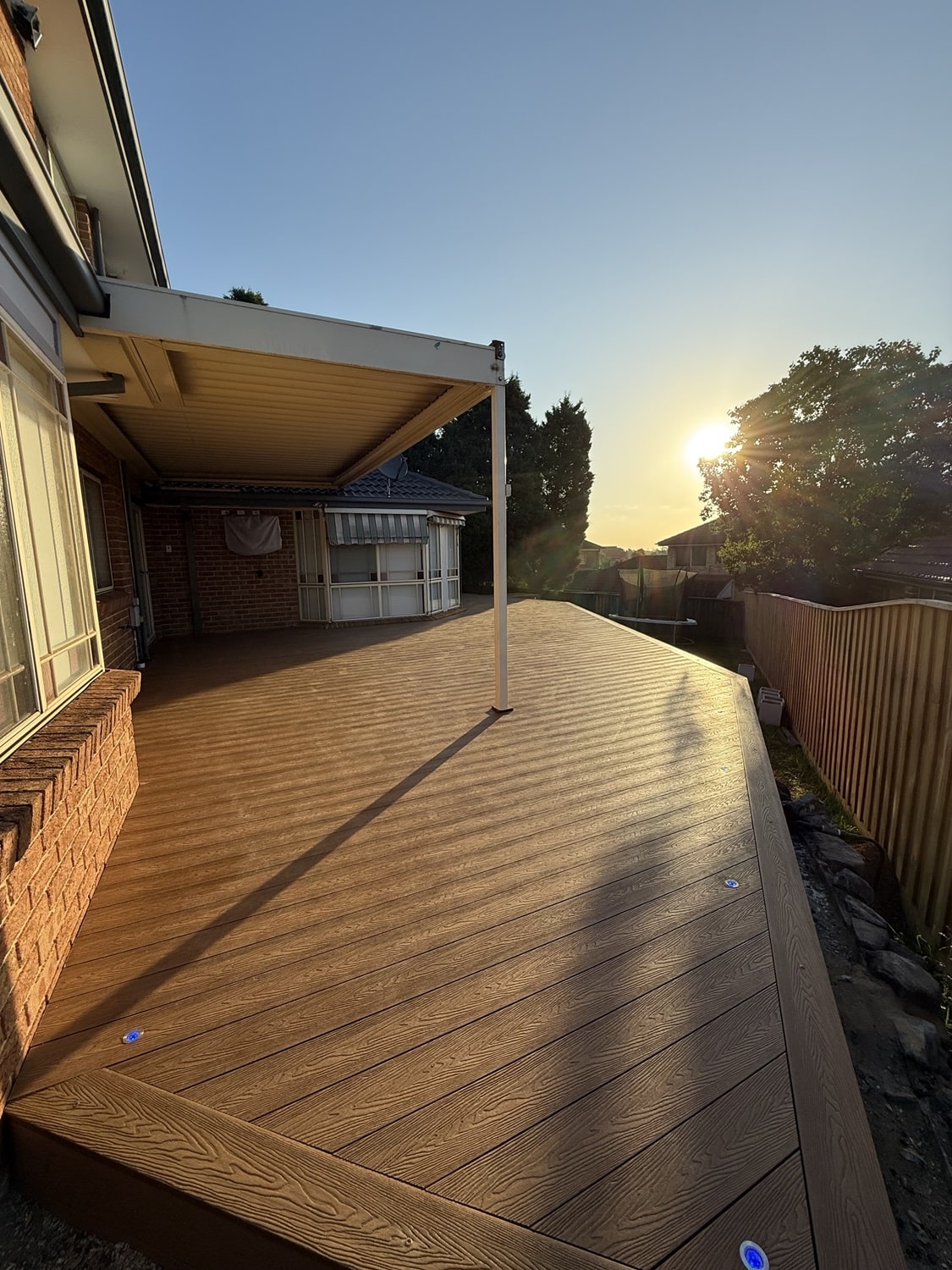A timber deck is a fantastic addition to any home, providing a warm and inviting outdoor space. However, maintaining a timber deck in humid climates can be challenging. Moisture in the air can lead to problems such as warping, rot, and discolouration, which can quickly age your deck if not properly managed.
To keep your deck looking fresh and new, it’s important to understand the effects of humidity and take proactive steps to protect it. Selecting the right type of timber and applying appropriate sealants can extend the life of your deck considerably. Regular maintenance, such as cleaning and inspecting for moisture damage, is essential in preventing long-term issues.
Additionally, enhancing your deck’s weather resistance with clever planning can save time and money on repairs. By incorporating shade solutions and weatherproof accessories, you can further safeguard your deck against the elements. With the right care and attention, your timber deck can remain a beautiful feature of your home for years to come.
Understanding the Effects of Humidity on Timber Decks
Humidity has a significant impact on the quality of timber decks, especially in areas where moisture is consistently high. Timber naturally absorbs water, causing it to expand. When the air dries out, the timber contracts. This constant expansion and contraction can wear down the wood, making it important to recognise how humidity affects timber quality.
Common issues caused by humidity include warping, rot, and discolouration. Warping occurs when different parts of the timber expand at varying rates, leading to a bent or twisted appearance. Rot is another problem, fostered by persistent dampness, which leads to wood decay that can weaken the deck structure. Discolouration is often seen as grey or black patches caused by mould growth, which thrives in moist conditions.
Recognising early signs of damage can save time and money in repairs. Look for changes in colour or appearance, soft spots in the timber, or any new warping. Frequent inspections are key, as addressing problems early can prevent them from developing into bigger issues. Awareness of these signs allows for quicker intervention and helps maintain the longevity of your deck.
Protective Measures for Longevity
Choosing the right timber and sealants is an essential step to protect your deck. Some timbers, like treated pine and hardwoods such as merbau, are better suited for humid climates due to their natural resilience and durability. Sealants act as a protective layer, keeping moisture out of the timber. It’s crucial to select a high-quality sealant designed for outdoor use and follow the manufacturer’s instructions for application.
Applying regular treatments and coatings helps maintain your deck’s condition. Consider using oils or stains every six to twelve months to nourish and protect the wood. These products penetrate the timber, adding an extra layer of defence against moisture and sunlight, which can cause fading.
The importance of proper ventilation and drainage cannot be overstated. Ensure there is adequate space under the deck for air circulation to prevent moisture build-up. Installing a slight slope will encourage water to drain away, reducing the chance of water pooling and causing rot. These measures help keep your deck dry and less susceptible to humidity-related damage, ensuring it stays beautiful and strong for years to come.
Regular Maintenance Tips
Keeping your timber deck in good shape requires regular maintenance. Establishing a cleaning routine is the first and most straightforward step. Wash your deck with a brush and mild detergent to remove dirt, debris, and mould that can accumulate and cause damage over time. Avoid using harsh chemicals that might strip the timber of its natural oils.
It’s critical to check for and address moisture build-up frequently. After rainy weather, ensure there are no water puddles lingering on the surface. Water traps can lead to rot and mould, weakening the timber. Using a leaf blower or a squeegee can help in quickly removing any collected water.
Seasonal inspections and repairs are also crucial. Look for signs of wear and tear, such as splinters, loose nails, or cracks. Addressing these issues promptly prevents them from becoming larger problems. During seasonal changes, your deck may expand or contract, causing loose boards. Tightening screws and tapping down nails helps maintain your deck’s integrity.
Enhancing Your Deck’s Weather Resistance
Improving your deck’s resistance to the weather involves several strategies that boost its durability. Consider using weatherproofing accessories like deck covers and tarps. These can shield your timber from heavy rain or direct sunlight, both of which can cause damage.
Incorporating shade solutions such as umbrellas or pergolas not only enhances the usability of the space but also offers protection. Shaded areas reduce the solar impact on your deck, limiting heat and UV exposure which can fade and weaken timber.
Planning for preventative upkeep is smart. Regularly apply a quality timber sealant or weatherproof coating to your deck. These coatings create a barrier against moisture and UV rays. Make sure to choose products designed for outdoor timber use for the best results.
Conclusion
Caring for your timber deck in a humid climate means being proactive and consistent with maintenance and protection strategies. Each effort you invest in cleaning, inspecting, and weatherproofing your deck contributes to its longevity and beauty. A well-maintained deck not only enhances the aesthetic appeal of your outdoor space but also ensures a safe and enjoyable environment for family and friends.
If you’re ready to take the next step in maintaining your timber deck or embarking on a new project, don’t hesitate to reach out to Rifcon Building & Carpentry. Our team of timber deck builders offers unparalleled expertise in timber decking, helping you navigate all your maintenance needs with ease. Let us help you keep your deck looking new and inviting for years to come.


